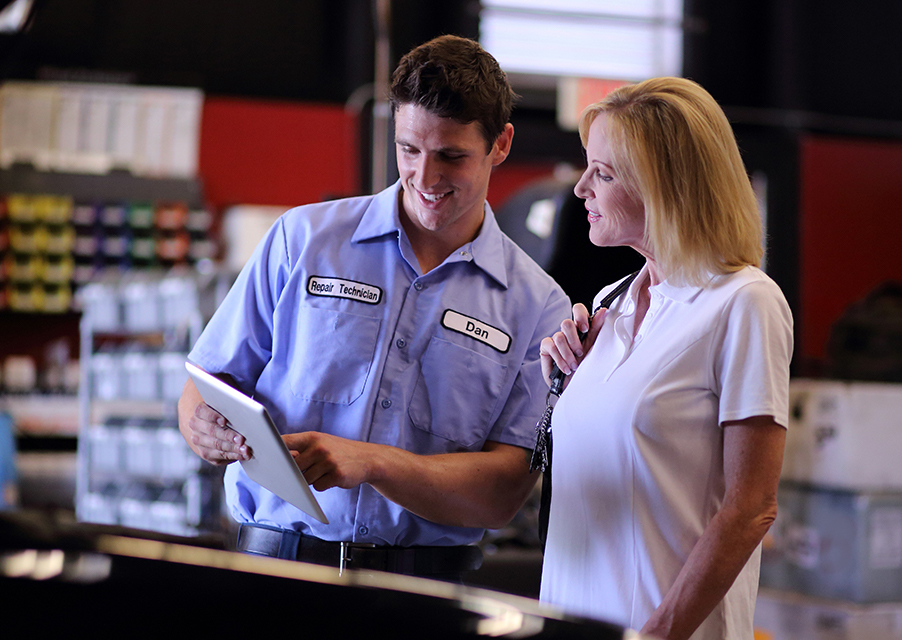A Disruptive Transformation, and a Golden Opportunity
Automotive retailers and service professionals face a disruptive transformation. Indeed, while the business of selling and servicing cars seems to be moving at the pace of “business as usual,” around the bend lies one of the most challenging times since the 2009 recession. Consider: Today’s balky, downshifting market, combined with rising interest rates and the rise of multiple customer options, has created a stew of margin pressure. Not to mention increased customer expectations.
Fixed Ops to the Rescue…Or Not
A key profit anchor for dealerships when times are tough, service departments have historically risen to the occasion. Will this time be different? Maybe. Today, the service drive is also under pressure from several transformative disruptors:
- Millennial influencers are forcing a technology-based culture change. They’re demanding a convenient, transparent and personalized service experience.
- The ongoing technician shortage presents challenges to maintaining shop operations and growing the capacity to meet demand.
- Improved vehicle reliability and longer service intervals make repairs less common and service visits less frequent. It’s a fact compounded by the adoption of electric vehicles and the ever-present competitive pressure from independent shops.
- Dealers seek ways to expand service department capacity without making sizeable brick & mortar investments.
These demands are forcing the adoption of technology solutions across service departments. Digital workflows and service platforms are creating process efficiencies that scale, while also speeding transactions and connecting to customers. The result is an environment of high-risk for dealers: get your technology right or suffer the consequences of lower customer satisfaction and retention in the bedrock of your business.
Disruptive Technology Gains Velocity
This disruption to traditional practices is quickly gaining velocity. Consider how Uber, Lyft and others disrupt the transportation business and create more consumer options. Note how this idea of personalized mobility has evolved into ride-sharing services and subscription-based vehicle leasing platforms. Information sharing between cars, customers and companies is also on the move.
Telematics has already enriched the diagnostic and information-capturing capabilities of new vehicles, including creating data profiles of the vehicle and customer. In fact, research from McKinsey estimates that connected cars may account for 22 percent of all vehicles on the road by 2020. Indeed, as the industry moves toward 2020, these developments will accelerate as big data, AI and machine learning are infused into platforms and processes.
Ever-Rising Customer Expectations
Telematic and autonomous technologies are already changing new vehicle development, sales, and service. Yet there are still 250 million passenger vehicles on the road in need of service and repair – most of which do not have any of this new technology.
So, what does it take to win the hearts and minds of today’s consumers? The answer is reflected in consumer behavior: they are moving away from simply purchasing products and towards carefully designed, recurring customer experiences, enabled by intelligent applications served on mobile technology.
Amazon is busy creating a personalized, intuitive, and frictionless experience that retrains consumers to expect transparency and data throughput.
In fact, there are more than a few companies that have demonstrated this trend toward the intelligent use of data and preferences applied to mobile applications in stellar ways. One need only look to Amazon to see how the core of this idea can disrupt industries and win the hearts of consumers.
Not only do they know each customer’s relevant measurements, demographics, preferences, and payment info, they anticipate each need and gently make suggestions at the appropriate time. Through the careful use of many types of data, they are able to think differently about the customer interaction. As a result they provide a compelling, ongoing experience with a personalized touch.
The result is an experience that’s noticeably different and better than those of competitors because it makes the process of continually buying a product or service incredibly easy and habit-forming.

